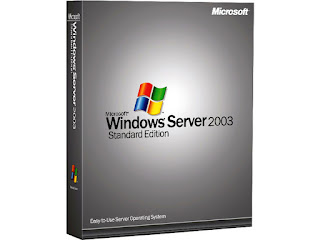All things must come to an end . . . Even Windows Server 2003
Some things seem to last forever. The Rolling Stones, root canals, the wedding you wish you weren’t attending, your first 5K, and the “opening band”.
Other things end too quickly. Summer Vacations, a good nap, Almond Joy cupcakes and Venti lattes.
But, like the Roman Empire, K-swiss canvas shoes and the Mars bar, everything must eventually come to an end.
Such is the case with the established reign of Windows Server 2003 in the workplace. On
July 14th, the entrenched on-premise operating systems will drop out of extended support by Microsoft.
What does that mean exactly?
Well, it means that Microsoft will not provide support or security updates for any version of Windows Server 2003. This is essentially a death sentence for servers running 2003, because any new security vulnerabilities will, from July 14th, go unfixed by Microsoft.
For 15 years, many businesses have built their critical infrastructure on Server 2003. And believe it or not, a survey done in March of 2015 showed that 61% of businesses still use Server 2003! This represents a massive opportunity for IT companies as the “Great Migration” takes place in the coming months, and a massive challenge to businesses that didn’t see this coming early enough to craft their plan.
So what should you do if you find yourself to be one of the businesses that relies on this reliable but aged operating system?
DON’T PANIC!
We’re here to help.
- Scope it out
- Get some help
- Make a Plan
Scope it out:
First, the IT industry has changed beyond recognition since Server 2003 became popular and gained its foothold. That means that right now, you have some choices to make. Your migrated infrastructure will likely look very different than the one you’ve had for the last 10+ years.
There are many cloud options that could change (for the better) the way you store and access your data. You will be considering virtual servers, cloud storage, online backup systems, virtual desktop and many other factors before you decide on the final migration strategy.
But cloud isn’t the best solution for everyone. The best thing for your business may be to keep your systems on site and deploy Windows Server 2012 to new or virtualized hardware. How do you decide? Read on . . .
Get some help:
You wont be able to navigate the available options without a good consulting partner or your IT department. Talk to someone who will take the time to learn about your business and select the course that is best for you, leading to higher productivity, lower costs, and overall better return on investment.
Make a Plan:
Regardless of which direction in which you decide to head, start making your migration plan. This plan will include where your data is stored, how it is accessed by your users, how it is secured and backed up, and disaster recovery procedures.
In conclusion . . .
All of this may seem confusing. Seek out help from your local IT professional, or if you want to talk to us contact us via dm @availabletech or https://available-tech.net.
So yes, change is inevitable. However, in many cases, like VHS tapes and encyclopedias, you will find that the new way of doing things is better for you and your business.
Mike Lane, Available Technology Inc
http://dmichaellane.com







